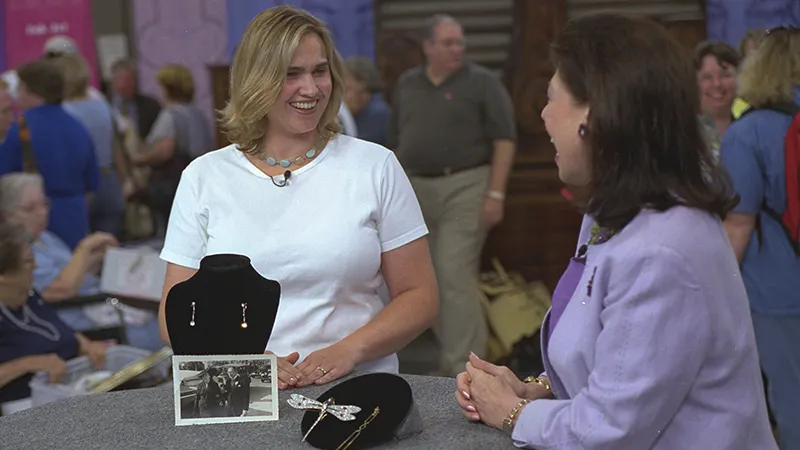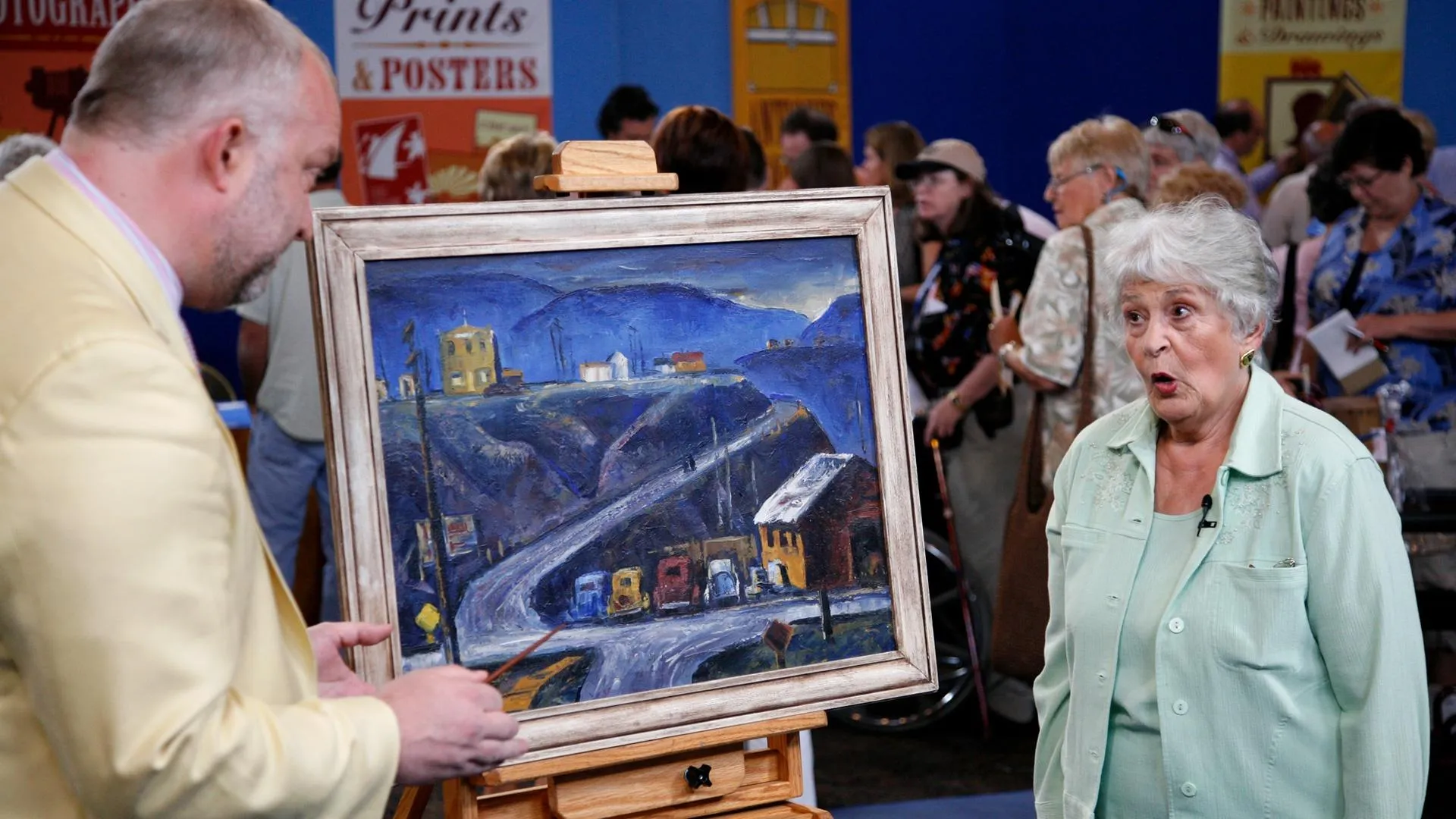GUEST: My grandmother wanted to give me an heirloom as a wedding present, and this had belonged to my great-great-grandmother. She had gotten it for her wedding, and it had just been passed down.
APPRAISER: So your great-great-grandmother presumably is the person whose monogram is on the base here?
GUEST: Yes.
APPRAISER: "E.F.," and that's 1883.
GUEST: 1883.
APPRAISER: This is one of the best examples I've seen of an Aesthetic Movement silver tea service. Now, Gorham and Tiffany, the two great makers at the end of the 19th century in America, they're very, very famous. There are two other firms, though, that I don't think get the same sort of attention. But some of their work is nearly as good, in some cases, as good as Gorham and Tiffany. And that's Whiting, and the other firm that's even less well-known is Dominick & Haff. And they're the makers of this tea service. It's Dominick with a C-K, and Haff, H-A-F-F. And they produced this wonderful range of Aesthetic Movement material in the 1880s. It's all based on Japanese decorative arts. You can see here the handle's reminiscent of raffia covering there. And it all has this hand-hammered finish, decorated with little fish swimming around in the pool there, and these wonderful dragonflies. All based on nature. A wonderful combination of Asia and American, great exuberance in silver at this period. I'll tell you, if this came up in a major auction, I wouldn't see any problem with this selling for between $15,000 and $20,000.
GUEST: Wow. (laughs) Wow. Didn't expect that.
APPRAISER: It's a fantastic example, and it's what we... I hate to use the cliché, but it's what we refer to as museum quality.
GUEST: Wow.
APPRAISER: It really is a fantastic set.
GUEST: I mean I know it's hardly ever been used, so.
APPRAISER: Yeah, it's obviously been very well taken care of. And I'm sure you'll take care of it, too.
GUEST: Oh yeah, definitely.
APPRAISER: But enjoy it, too. I hope you use it sometimes.
GUEST: Thank you, thank you.












